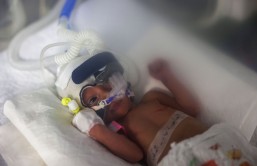The U.S. National Aeronautics and Space Administration (NASA) announced on Wednesday that a flight test for its flying saucer might be delayed for weeks due to bad weather.
Earlier this month, NASA announced that the saucer-shaped test vehicle Low-Density Supersonic Decelerator (LDSD) project completed its final assembly and set for its first flight test on June 3. The flying saucer completed its three weeks of testing to confirm that it was indeed ready for the first launch.
The launch was delayed from June 3 to June 7. The day before, the space agency announced that it might be delayed once more until June 14 because of unmanageable winds. The harsh wind flow could be a fundamental factor because the right speed and direction was required to launch the balloon that would carry the flying saucer.
On Wednesday afternoon, the space agency released another update that there would be no launch on Saturday because of unstable weather. This time, the project managers did not give specific dates of the flight schedule, citing a need for additional research and consideration of additional costs.
The LDSD project was designed to explore advanced technologies that could be used in future Mars missions, including sending humans to the Red Planet. NASA engineers believed that the success of the flying saucer would be critical, as it would allow them to determine the payload limit when delivering supplies and materials needed for those who would be deployed to Mars.
Once the test flight is resumed, spectators can watch a live stream on the Internet. The low-resolution images from the flying saucer will show the vehicle dropping from its balloon mothership before it heads to the very edge of the stratosphere. NASA chose the stratosphere as its testing environment because of its similarity to the thin atmosphere of Mars.








